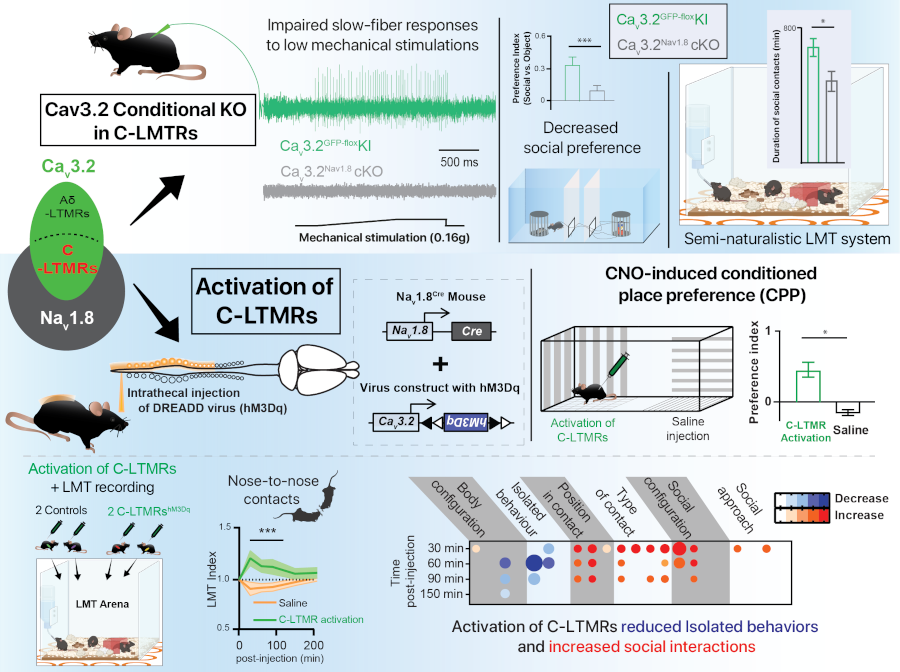Voluntary or not, our daily life is full of interpersonal tactile contacts. In psychology and neurobiology, these contacts are grouped under the term of social touch, or affective touch when it comes to contact with our loved ones. Omnipresent but little studied, the real impact of this type of touch on our physiology and our behaviors remained to be defined.
In order to identify the mechanisms underlying the perception of affective touch, the teams headed by Emmanuel Bourinet and Amaury François have developed a viral technique to create, for the first time, a feeling of pleasant touch in mice in an artificial way. Moreover, by studying the behavior of mice following this stimulation, they observed that this activation strongly incited the animals to interact and create social links between them. Conversely, by altering the functioning of this population of neurons from birth, this has negative consequences on social interactions, as well as on the motivation to touch another mouse.
This study demonstrates for the first time that there is a neuronal population innervating the skin dedicated mainly to the detection of pleasant and affective touch and that this neuronal pathway is intrinsically pleasant. It is proposed that affective touch is not only a mental construct, but a full-fledged sense supported by a type of neuronal cells innervating the skin.

The alteration of the Cav3.2 calcium channel specifically in Nav1.8 neurons, impairs the functioning of C-LTMRs.
(Top row) Mice with impaired C-LTMRs (Cav3.2Nav1.8cKO, in grey) have a reduced social preference index in the three-chambered social-preference test (Left panel) and display fewer social contacts when tested across several days in the semi-naturalistic Live-mouse-Tracker (LMT, Mid panel). Importantly, C-LTMRs, which are slow firing fibers display reduced firing in response to low-mechanical stimulation when test with in vivo electrophysiological recordings (right panel).
(Bottom rows) By injecting viruses loaded with the Dreadd chemostimulator, hM3Dq, intrathecally of Nav1.8Cre mice, it was possible to seslectively activate C-LTMRs upon injection of CNO. The potentiation of C-LTMRs with CNO in a conditioned-place-preference (CPP) paradigm showed the preference for the side associated with CNO, which illustrates the rewarding porperties of C-LTMRs activation. Importantly, mice which were injected with CNO prior being recorded in the LMT environment displayed in increase in social behaviors and a decrease in isolated situations in comparison to the behavior elicited following Saline injections.


